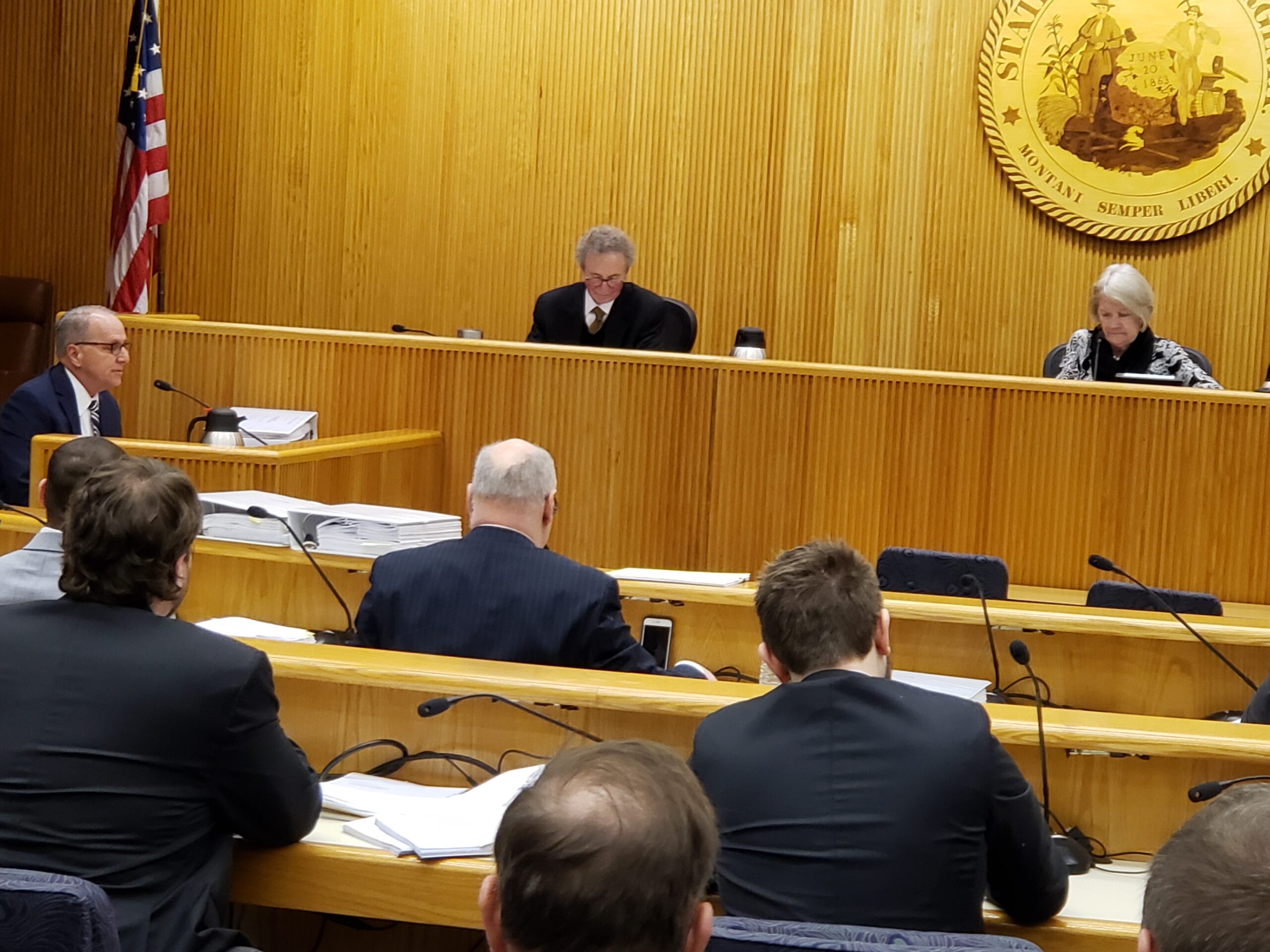CHARLESTON – Supporters and opponents of the two proposed new Longview Power plants met at Public Service Commission headquarters Thursday morning for an evidentiary hearing on the siting certificate requests for the plants.
Most of the questioning focused on the Payment in Lieu of Taxes (PILOT) agreement with Monongalia County with some additional discussion about traffic and the proposed park.
The two proposed plants are Longview Power II, a 1,200 megawatt powered by two high-efficiency, low-heat-rate gas turbines and occupying about 54 acres north of the existing Maidsville plant, and Longview Renewable Power: three solar panel array fields generating about 70 MW of power, 20 MW in the West Virginia array also near the existing plant, and 50 MW just across the Pennsylvania border. The total array will cover 70 acres, with a planned fourth array in West Virginia bringing the total acreage to 127.
PSC approval will allow the companies to build and operate the two facilities and a high-voltage transmission line.
Longview Power is negotiating a PILOT agreement for the two plants with Monongalia County that would provide the county with about $58.2 million across 30 years. Annual county revenue from the proposed PILOT — which hasn’t been finalized — is projected at $2.5 million up front, then gradually escalating from $1.58 million for the first five years up to $2.47 million in year 30.
Longview Power President and CEO Jeffery Keffer fielded questions from Sierra Club attorney Mike Becher about the PILOT.
Some plant opponents believe that the PILOT is a lowball figure and shortchanges Mon County on potential revenue (the original PILOT for the coal plant was worth $105 million over 40 years).
Becher asked if there’d been any effort to figure out what the county would earn without the PILOT. Keffer said there was discussion as to what the taxes could have been, but no agreement on a figure and no estimate submitted to the PSC.
Longview did estimate what taxes Greene County, Pa., would have collected based on an option to build both facilities there, Keffer said. Without a PILOT, Greene would have earned about $23 million over 30 years, compared to $58.2 million for Mon with a PILOT.
The PILOT isn’t finalized, Keffer said, but the dollar figures and payment plan in then term sheet reflect negotiations and won’t change. He didn’t know what Mon County factors have led to it not being finalized and he couldn’t guess when it might be complete.” It’ll certainly be done long before we commence construction of the plant.”
He affirmed that without the PILOT, Longview won’t build on this site.
Answering questions from the PSC commissioners, Longview attorney Christopher Callas added that the PSC shouldn’t need the finalized PILOT in order to makes its decision. The dollar figures in the non-binding term sheet are in fact binding, only some details might change. He agreed to make as a condition of PSC approval that any changes will be submitted to the PSC before construction begins – if the PSC finds that condition acceptable.
PSC staff attorney John Auville question Longview Chief Operating Officer Stephen Nelson on the planned public recreation area and traffic issues.
Nelson said the park isn’t in the documentation but, “We have every intention to adding that as part of the project.” Longview plans to make access available by reservation because it now has two parking areas on its private land that are publicly accessible and have had “nefarious activity,” such as drug deals, conducted there.
So Longview wants to have some control over access to the park. That may pose challenges for those who want to use the planned walking trail, he acknowledged, but the site has 24-hour security that will easy for walkers to contact and check in.
Maidsville resident Duane Nichols has previously raised concerns about truck traffic in the area and appeared on Thursday to mention it again. Auville followed up on that with Nelson.
Nelson said most of the construction traffic will come in from the north because the road grades are better that direction. Some of the “heavy haul” items – such as turbines – will come in by barge and then be trucked from the Monongahela River.
Longview is looking at a 30-month construction window on the gas plant, he said, but heavy traffic won’t occur during the entire span. There will be few materials deliveries the first five months. Then traffic will pick up and last through month 20, when deliveries will taper off and builders will use the materials at hand.
When it’s in operation, he said, the only additional traffic will be the plant’s 35 new workers. The natural gas will be piped in, unlike the coal for the original plant that gets trucked in.
James F. Wilson, a Maryland-based consultant with Wilson Energy Economics, was retained by the Sierra Club and briefly took the stand to reaffirm his written testimony that the gas plant is unnecessary.
Is written testimony says, “The PJM power market [PJM oversees the regional electric grid] has a substantial excess of capacity now and for the coming years. … Many new power plants have been constructed recently, and there is no need for additional capacity. Reserve margins are high, and energy and capacity prices are low. Excess capacity is already committed to the PJM market through
May 31, 2022, and I see no reasons to expect the following years to be much different.”
Thursday’s hearings didn’t end the proceedings. PSC Commissioner Charlotte Lane gave all the parties until Feb. 18 to file briefs containing their arguments for or against the projects. Then the parties will have until Feb. 28 to file replies to everyone else’s briefs. The PSC decision will come sometime after that.
TWITTER @dbeardtdp Email David Beard at dbeard@dominionpost.com




